The Chaos of Hanoi
What a difference a day makes. Leaving Japan and arriving in Vietnam was like going to another planet. The two places could not be more different. Japan is orderly, quiet, clean and reserved, while Vietnam is noisy, dirty and chaotic. But let me back up a bit.
In case you are wondering how to take a bicycle on a plane, it’s not easy. First I had to find a bicycle shop with spare bike boxes. Fortunately this is pretty easy, as bike shops are constantly getting new bikes and disposing of the boxes is a pain for them so they are happy to give them away. But then I had to hire an uber for $25 to transport the box back to my hotel, a couple km away, too far to walk with a bulky box. Then I have to remove the wheels, rear rack, pedals, seat and handlebars. The frame can then be wiggled into the box along with the wheels, my tent and sleeping bag and as many other things that I can up to the weight limit the airline imposes, which is about 70 lbs.
Then I needed to buy another smaller cardboard box and a roll of duct tape to pack my panniers and everything else. I took a couple small panniers as carry on luggage. It takes a day or so to get all this done. But all went well except my small cardboard box got soaked in the rain leaving Tokyo so it was tore up when it arrived in Hanoi. Nothing was missing though.
Getting into Vietnam was a little bureaucratic. You have to pay $25 for a visa authorization letter a couple days before you arrive. You also have to fill out a visa application and get a passport photo made. Then when you arrive at immigration, you give all this plus another $25 to the officials and they process your visa in about 20 minutes. After that you breeze through immigration and customs.
The next day of course I had to take everything out of the boxes and reassemble the bike. The Hanoi morning was so hot and humid I was drenched in sweat from minute one. Here’s the bike inside the box.
The frame as it came out of the box.
Assembled and ready to go!
So, Hanoi. Wow. I thought Cairo was crazy, but Hanoi is CRAZY. Waves of scooters pour through the streets, horns constantly beeping, sidewalks are crammed with vendors, shoppers, scooters and merchandise, so you are forced to walk in the street with cars, scooters, busses and pedestrians moving all around you. Crossing the street is an act of faith: you just walk in front of oncoming traffic, something that goes against every impulse, but somehow the scooters and cars just weave around you. It is wild. Here is some video I shot.
Busy intersection.
Night scene.
I don’t feel like my videos quite captured the essence of crossing the street in Hanoi so I found this great video on YouTube. It is hilarious and parodies the BBC series Planet Earth, narrated by David Attenborough.
Some views of Hanoi. A chicken that can’t go very far.
A cute little dog.
Beer delivery or a guy who loves Heineken.
A respite from the chaos: sitting by a lake in the Old Quarter of Hanoi.
Food vendor in the night market. Total chaos.
Getting Around
Hanoi is known for unscrupulous taxi drivers. They fix their meters to run faster or take roundabout ways to get to the destination in order to run up the meter. So, being street smart, I took a taxi and negotiated a fixed fee up front, which was about $5 to my destination. It seemed high but it was my first day. As we went, I noticed the taxi meter was running and when we arrived it read only $2.50. So I guess I outsmarted myself. I should have just used the meter.
Then, I took a cycle taxi, a bicycle with a seat. These are cheaper than a regular taxi. But this guy asked $10 for a 2 km ride which was outrageous. I offered $2, which was still excessive. Eventually we settled on $3, but when we got there he did not want to give me change. He did not speak English and pleaded that he was thirsty and needed some water or something. I demanded my change and he gave me some but after several minutes I let him keep what was left. There are about 22,000 Vietnamese Dong per dollar and this guy stole 10,000 dong from me. As he cycled away I realized this only amounted to about 43 cents, which is a joke. Plus he only had one eye and I kinda felt sorry for him. So although annoyed at the scam I can’t feel too bad. I probably had more money in my wallet than he makes in a month. But should I have stood my ground and demanded the 43 cents? Letting him get away with the scam just encourages him to do it again to the next tourist. It’s the principle, not the money. What would you have done? Here is my one-eyed cyclo driver.
After that I got smart. Google maps again came to the rescue. Google is amazing, I don’t know how they do it, but google maps has a public transportation icon. If you click this it will show you the best route using the bus system. The bus here cost about 30 cents so it is much cheaper than a taxi or cyclo driver. So now google tells me where to walk to the bus stop, what number bus to take, how many stops to go, and when I get off where to walk to my destination. This has saved me many several dollars over the past couple days. Which got me thinking: how do they do it? Does google know every bus route and every bus stop in every city in the world? How is that possible?
My Kind of Place
Vietnam is so cheap. I have to relate the following couple financial coups that I managed the other day. First, in Denver I wanted to buy glasses because my eyes are getting bad at distance. But the eye store wanted about $400 for lenses and frames. I declined. So I found an eyeglass place here and gave them my prescription. In ten minutes they made my glasses. Cost? $34 for lenses and frames. Ha! Then I needed vaccinations for typhoid and measles. Again the Denver clinic wanted about $300 for these. I checked an English speaking ex-pat clinic here and they wanted $63 for a consultation, plus the cost of the vaccinations. That seemed a bit steep so I searched around for a Vietnamese clinic. The local clinics are all Vietnamese, of course, no English. But again, google saved me with their translate app. I got in and got my vaccinations for only $20 in less than 20 minutes. Then I needed a cholesterol test (I have high cholesterol and have been taking some medication). Cost of the test? About $7. No consultation fee and it took about 15 minutes. This would have cost at least $100 in the USA. I love this place.
All this got me thinking: why is health care so expensive in the USA? I will do some research and report next blog. But if anyone has any insights please comment.
Anyway, more photos: Selling fruit from bamboo shoulder poles. A common sight in Hanoi.
Vietnamese food is great and if you have not tried it, go to a Vietnamese restaurant near where you live and see for yourself. I love the noodle soup, called pho , and pretty much everything else. Here’s a typical menu. The prices are in thousands of dong, so a bowl of pho costs 60,000 dong, about $2.70.
Here I am eating a bowl of mien gà chicken glass noodle soup. This and a beer cost $2.14. Yes! My kind of place. Except for the little stools they sit on. They belong in a kindergarten.
School’s out.
Motorcycle blur.
A sculpture in the Vietnam History Museum.
School kids on a field trip to the history museum.
I visited the Hoa Lo prison one day. The prison was built by the French in the 1890s when Vietnam was still part of French Indochina. It was intended to hold Vietnamese political prisoners agitating for independence. Prisoners were often subject to torture and execution. Its capacity was 600 inmates but was often overcrowded. By 1954 it held more than 2000 people held in subhuman conditions. It had become a symbol of colonialist exploitation and of the bitterness of the Vietnamese towards the French.
The central urban location of the prison also became part of its early character. During the 1910s through 1930s, street peddlers made an occupation of passing outside messages in through the jail’s windows and tossing tobacco and opium over the walls; letters and packets would be thrown out to the street in the opposite direction. Within the prison itself, communication and ideas passed. Indeed, many of the future leading figures in Communist North Vietnam spent time in the prison during the 1930s and 1940s.
During the USA-Vietnam War in the 1960s US prisoners of war were held there. During this period it was known to American POWs as the “Hanoi Hilton.”
Here is one the exhibits thats hows how Vietnamese prisoners were kept during the French occupation.
There were “death row” cells, where prisoners were kept prior to execution.
The guillotine was a common method of execution.
A photo of the late John McCain who was held in the prison for more than five years and suffered torture and was permanently injured as a result of mistreatment and beatings. The museum, though, emphasizes the humane treatment provided to the prisoners and shows photos of them playing games and eating large meals. It’s biased of course.
I toured the Fine Arts Museum one day. Here is a Hindu statue with a lot of arms. I often say I could use a few more arms. Imagine: you could make coffee, cook an omelet, compose an email, and brush your teeth all a the same time.
Ho Chi Minh, or Uncle Ho as he is known here, was a Vietnamese Communist revolutionary leader who was President (1945–1969) of the Democratic Republic of Vietnam (North Vietnam). He was a key figure in the foundation of the Democratic Republic of Vietnam in 1945 as well as the People’s Army of Vietnam and the Viet Cong during the Vietnam War. Love the beard.
The great thing about traveling is that you see the strangest things. How’s this for a cafe name?
Well I think that’s enough for now. I have been in Hanoi six days and will be leaving tomorrow. Stay tuned. Here is my intended route in Vietnam.
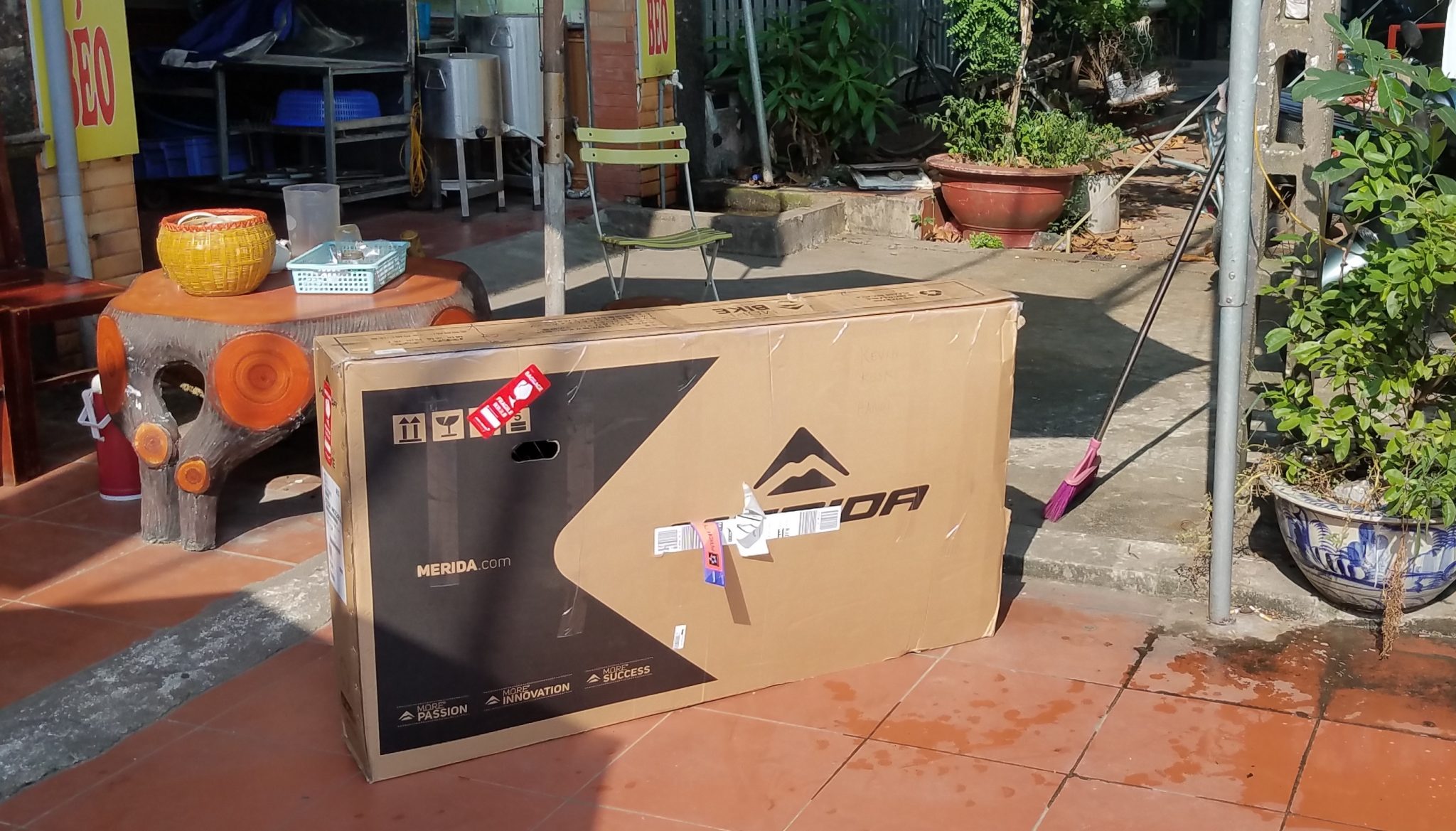


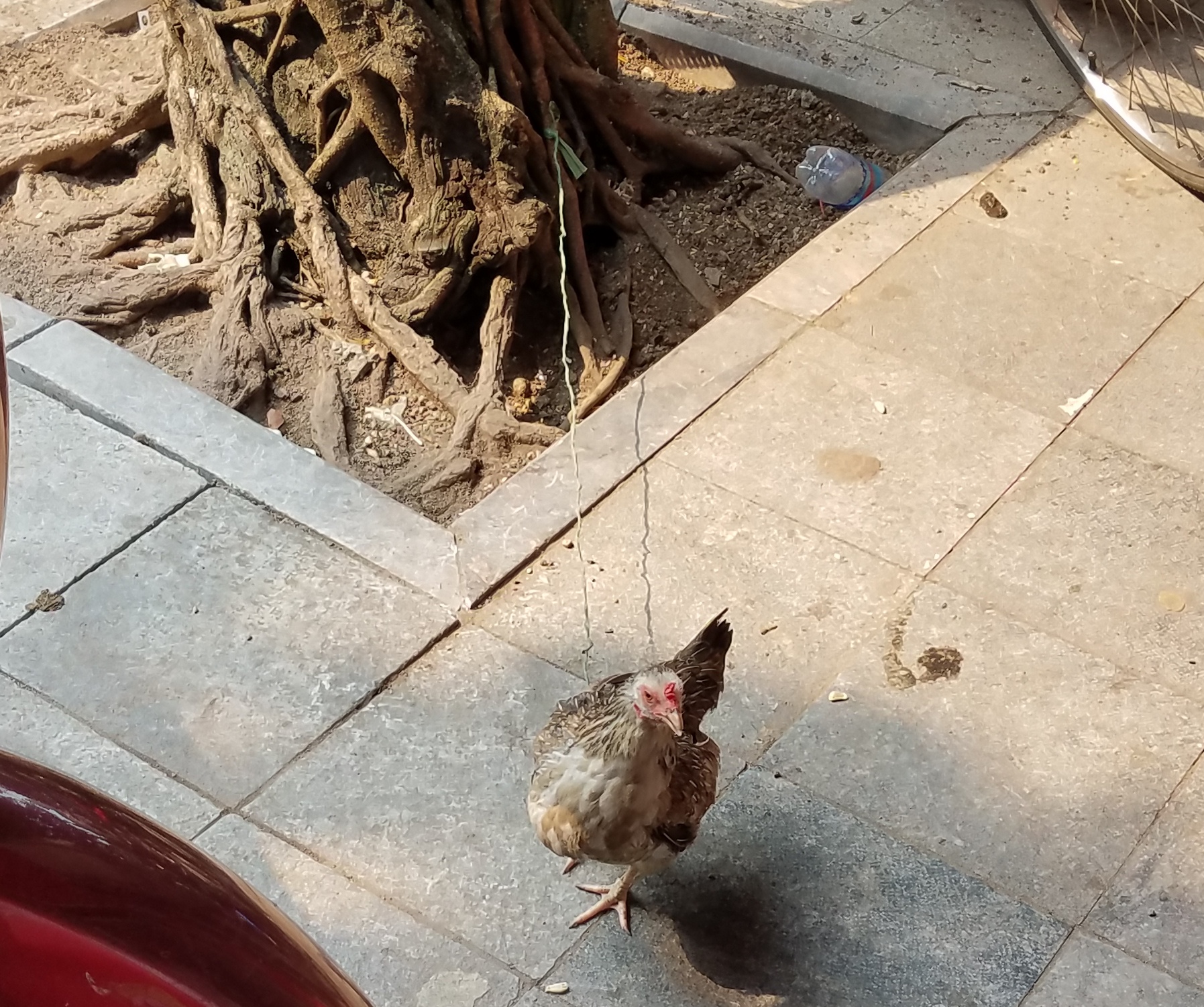

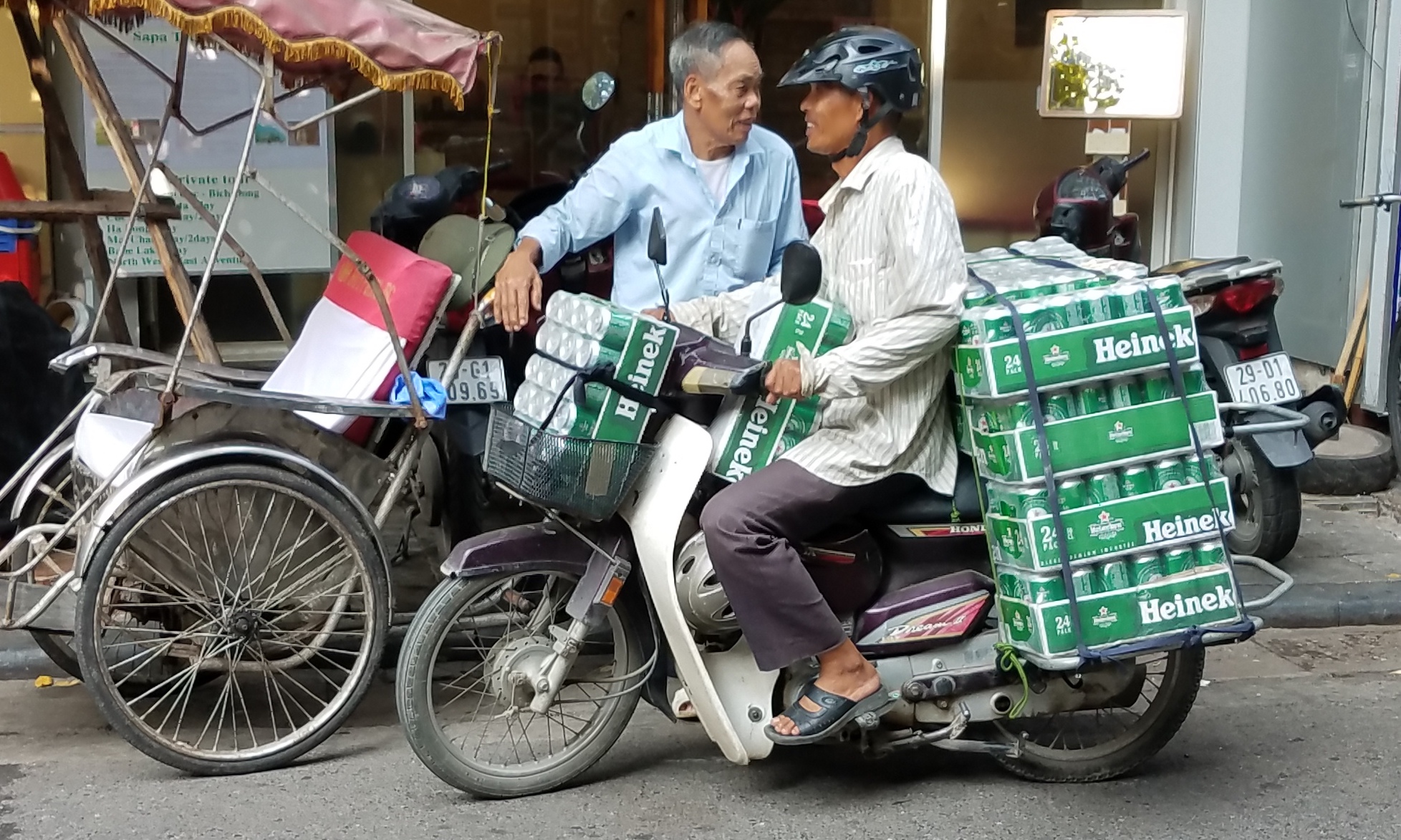
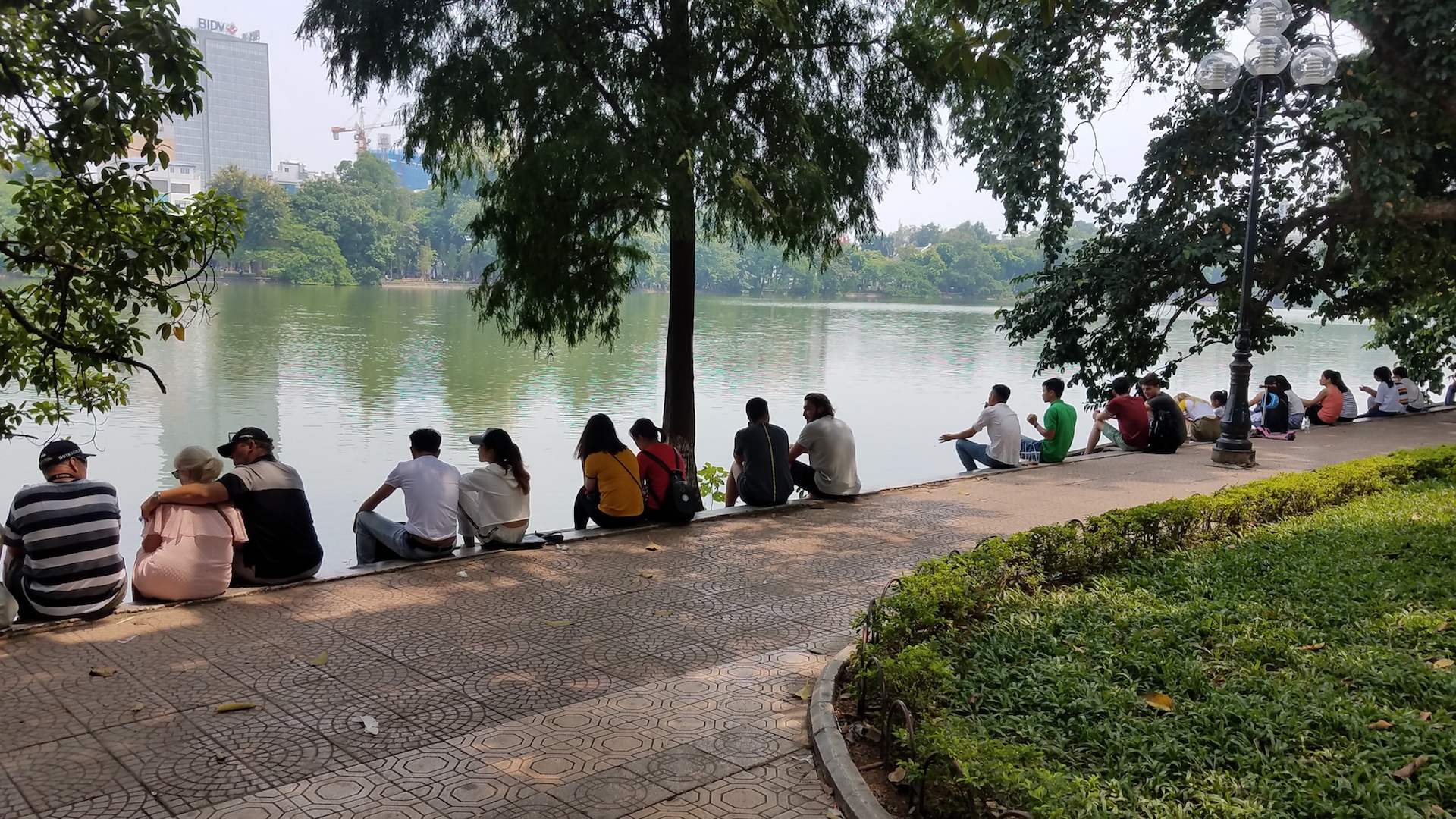

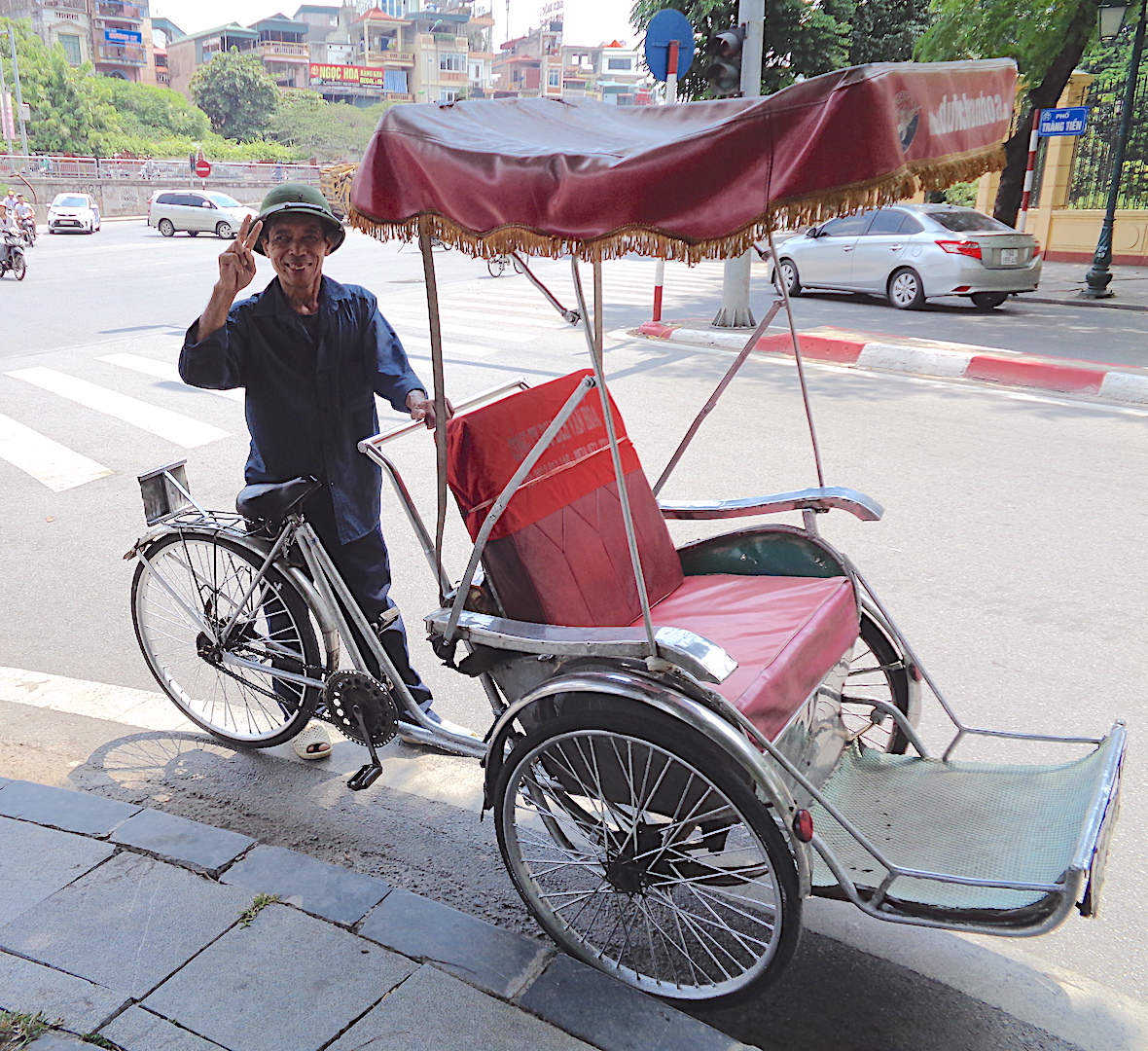
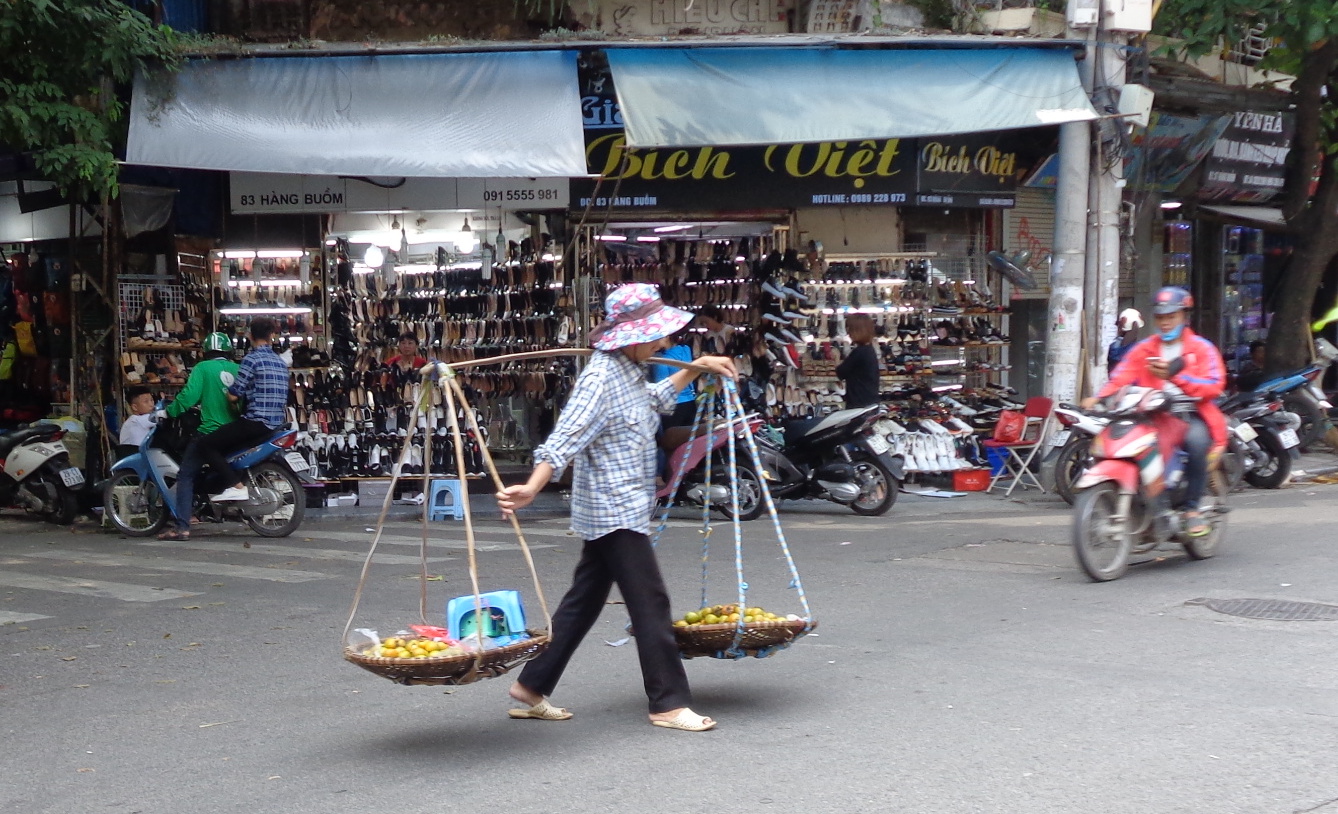
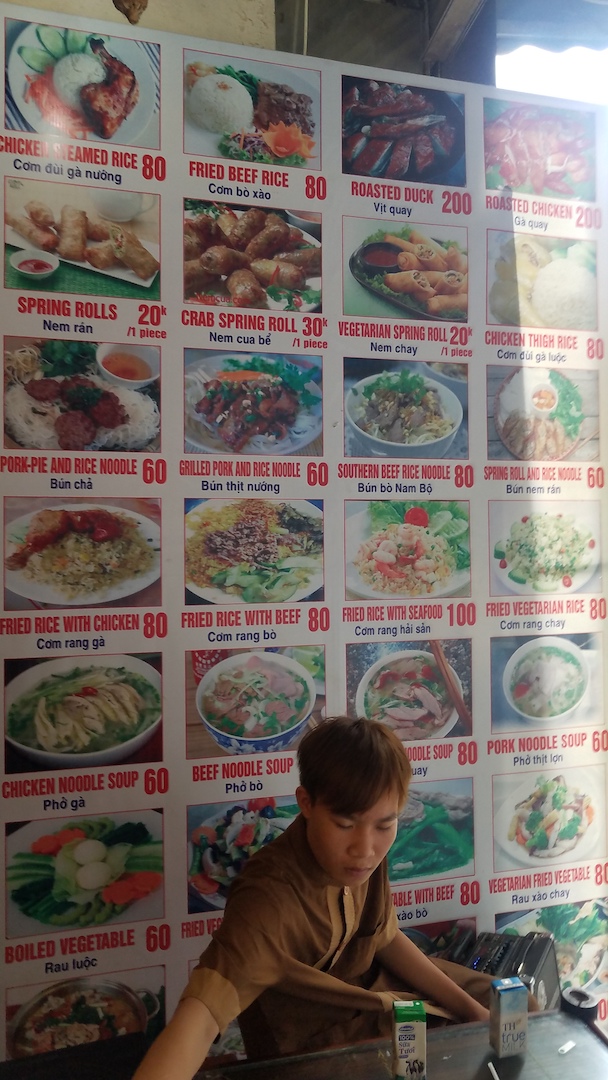
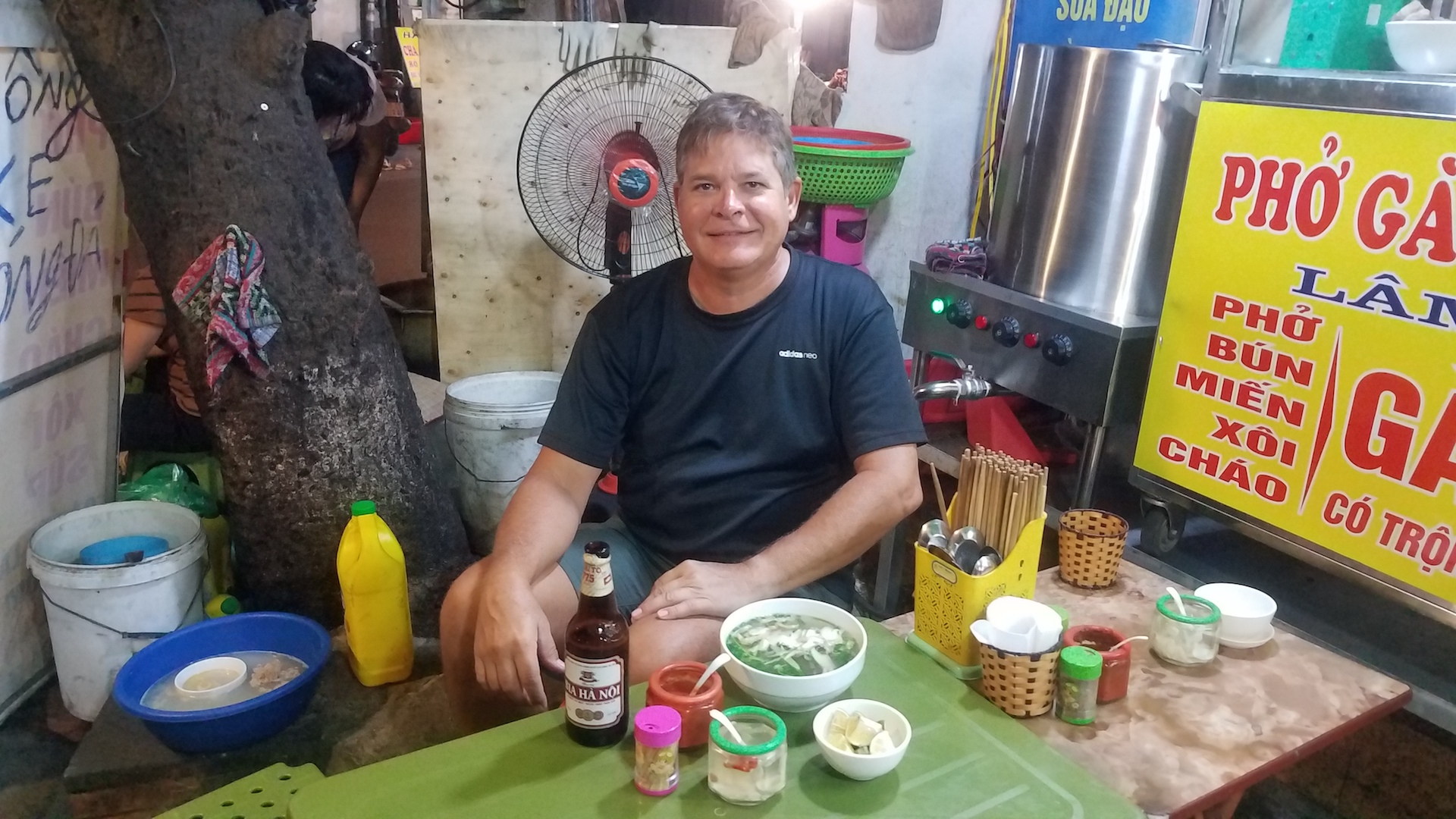

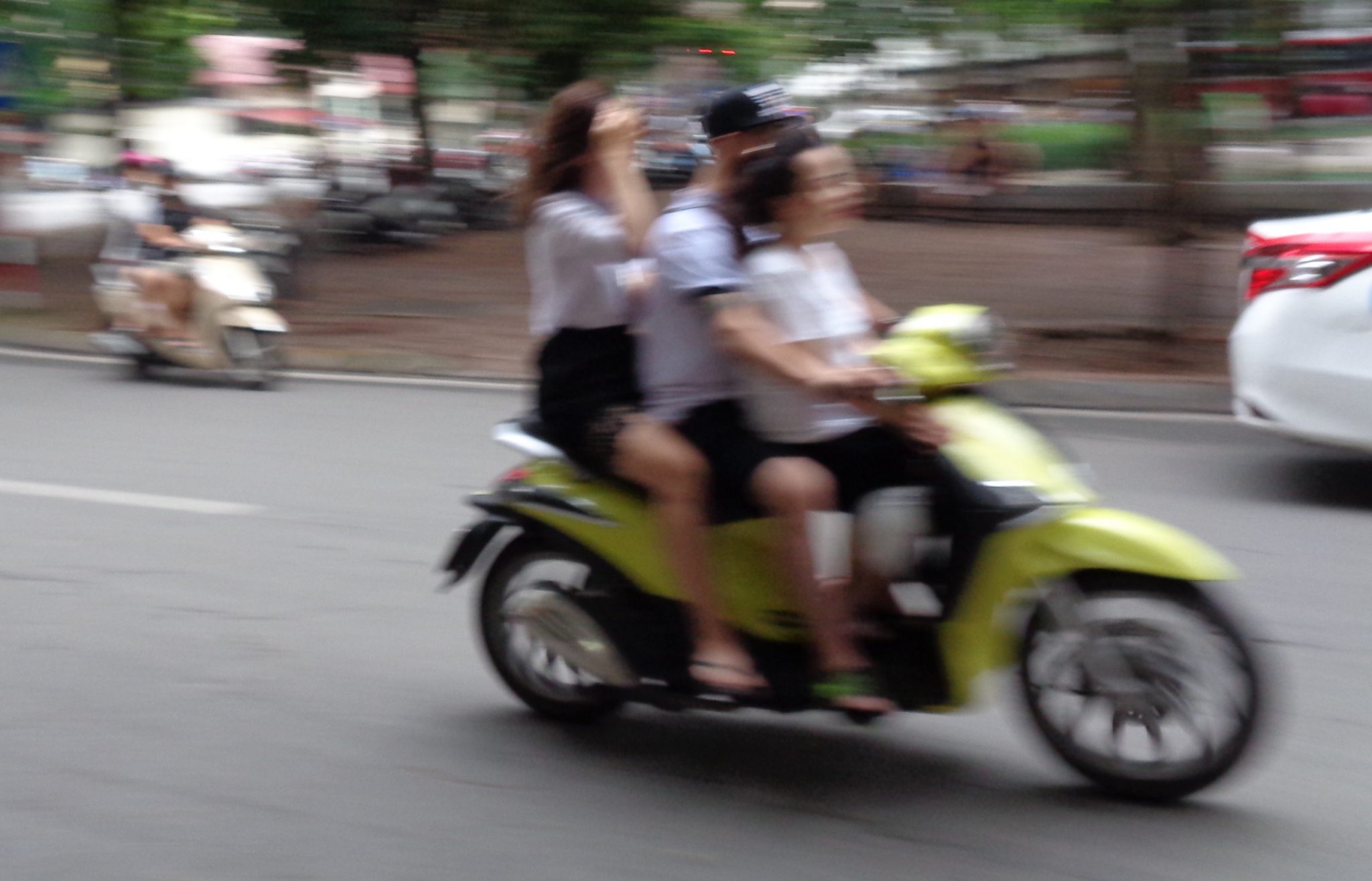
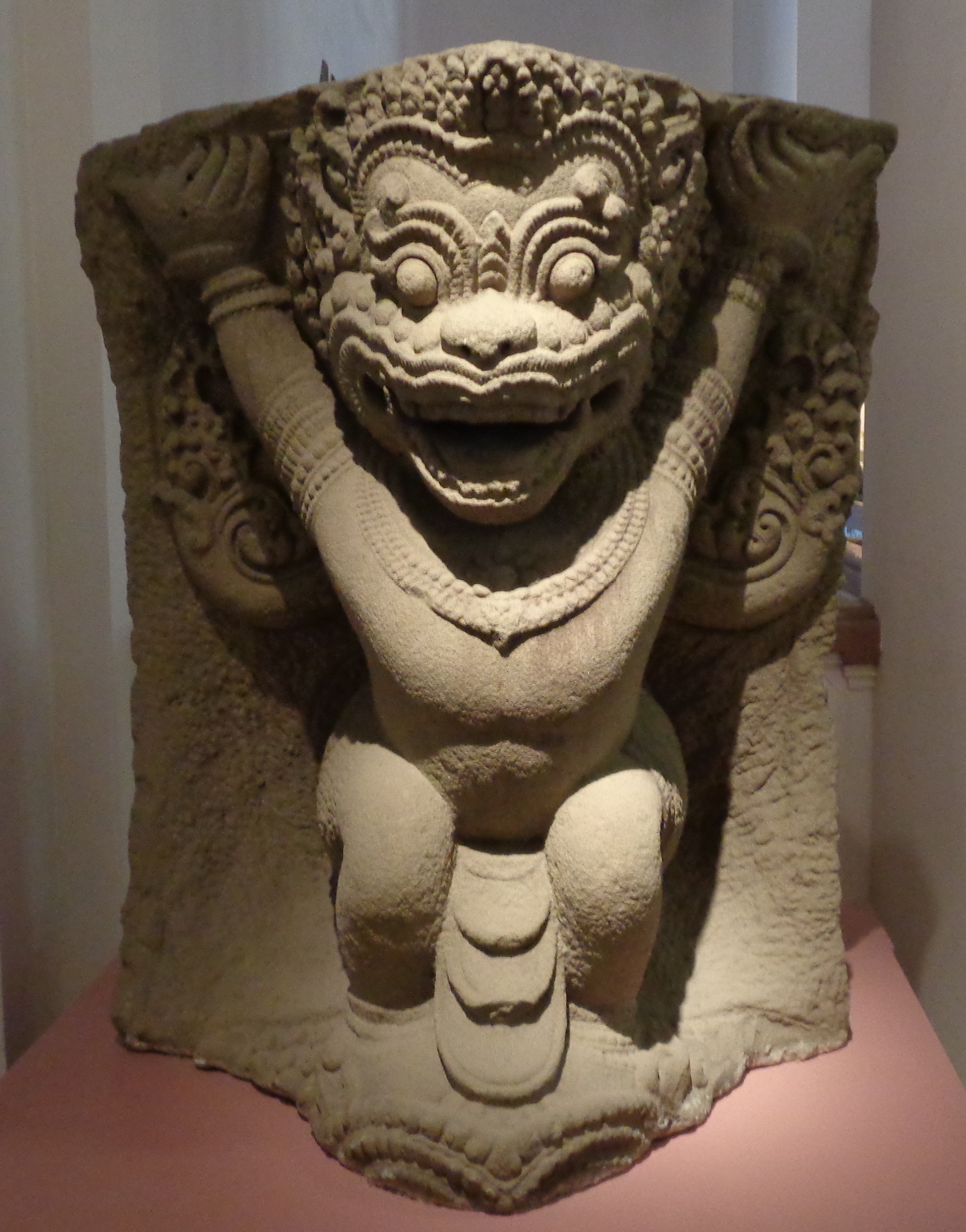
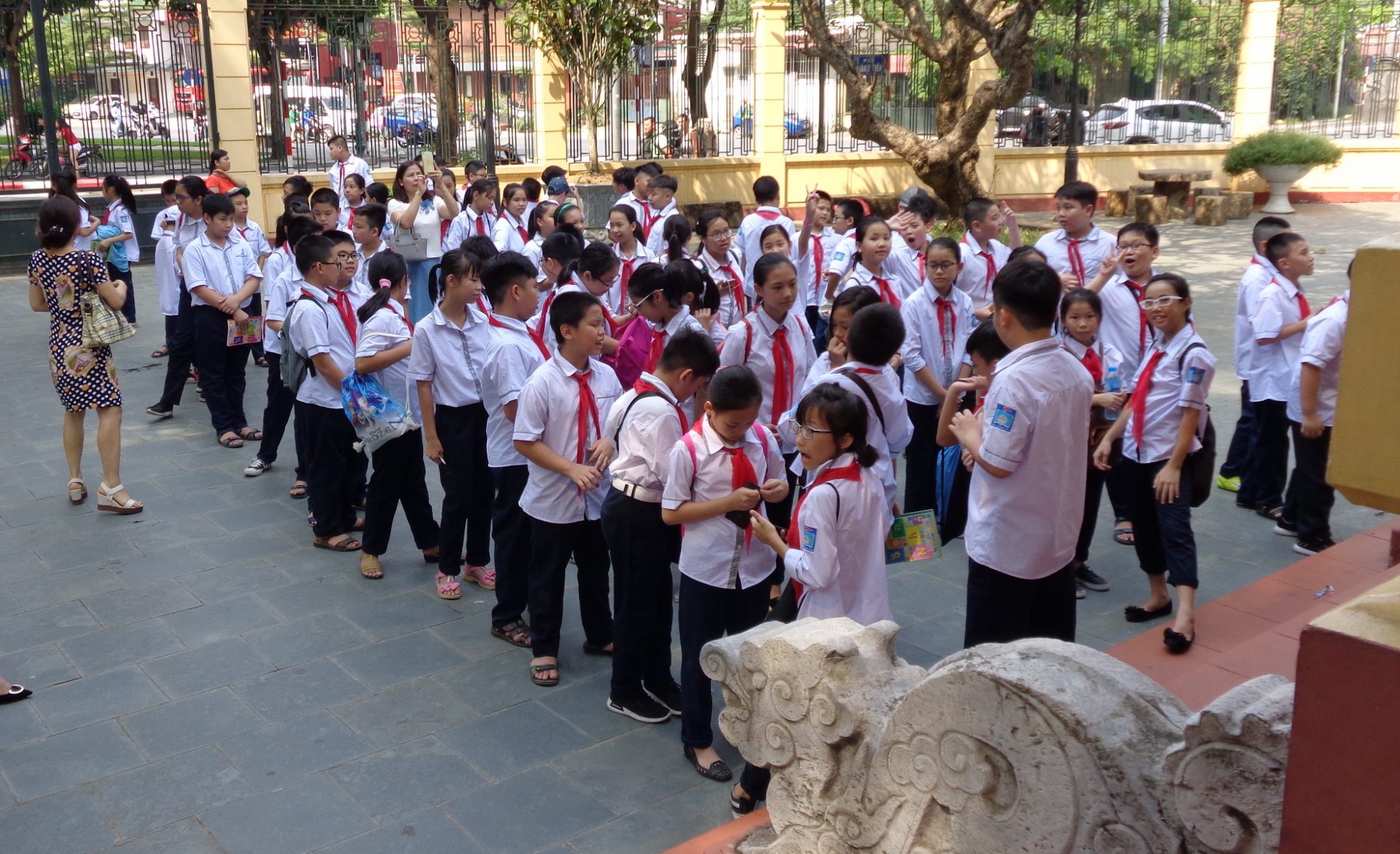
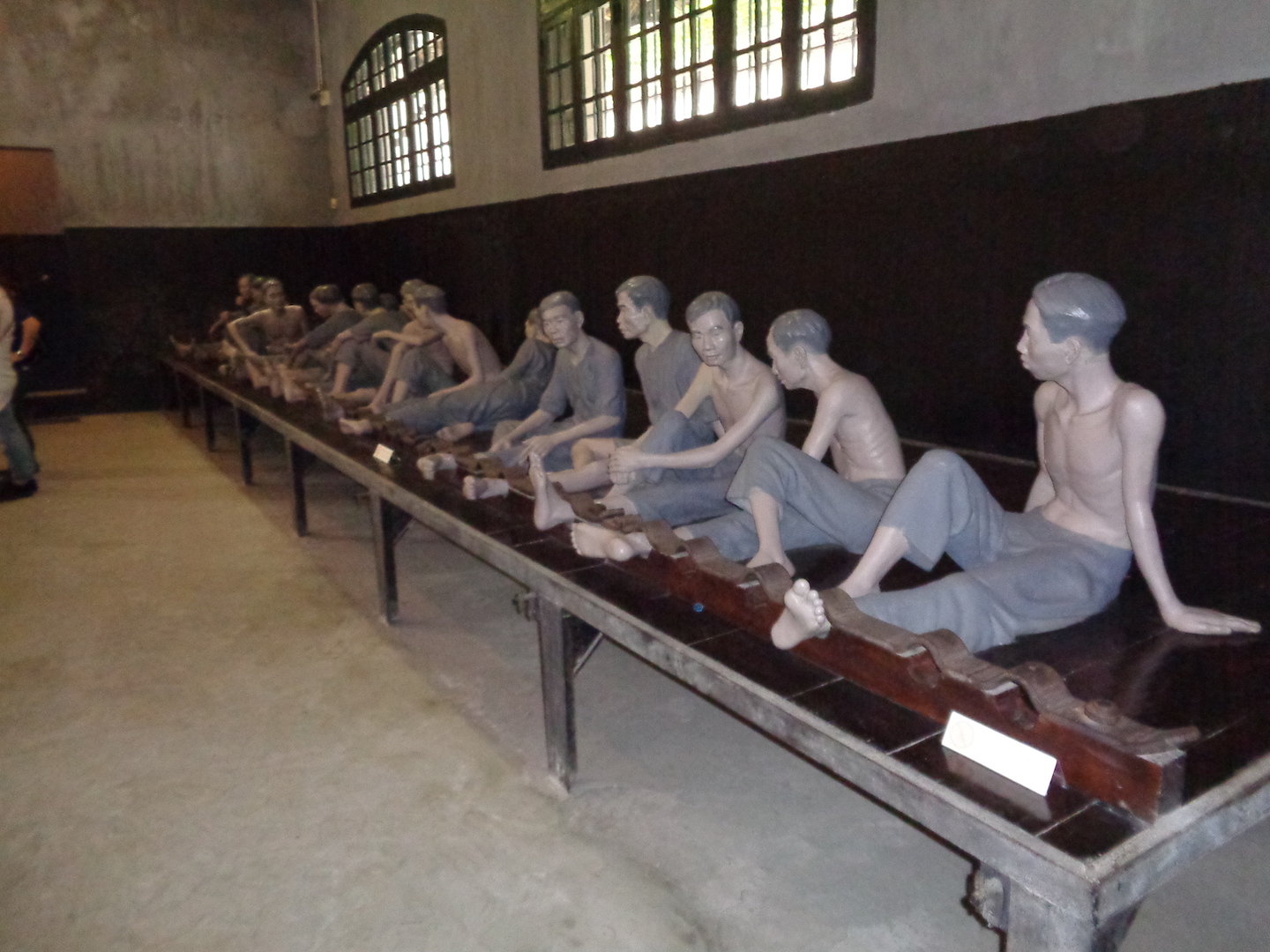
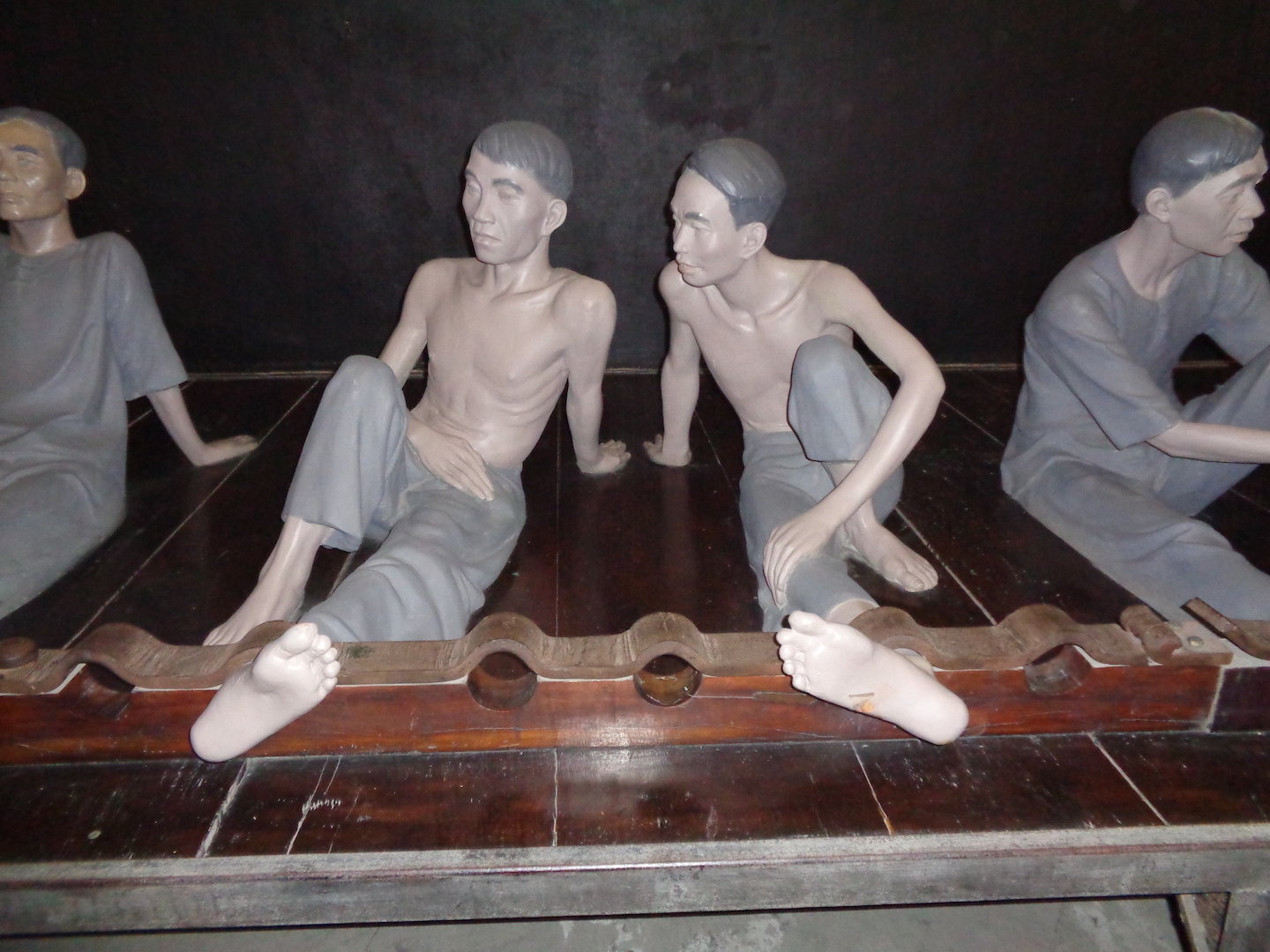
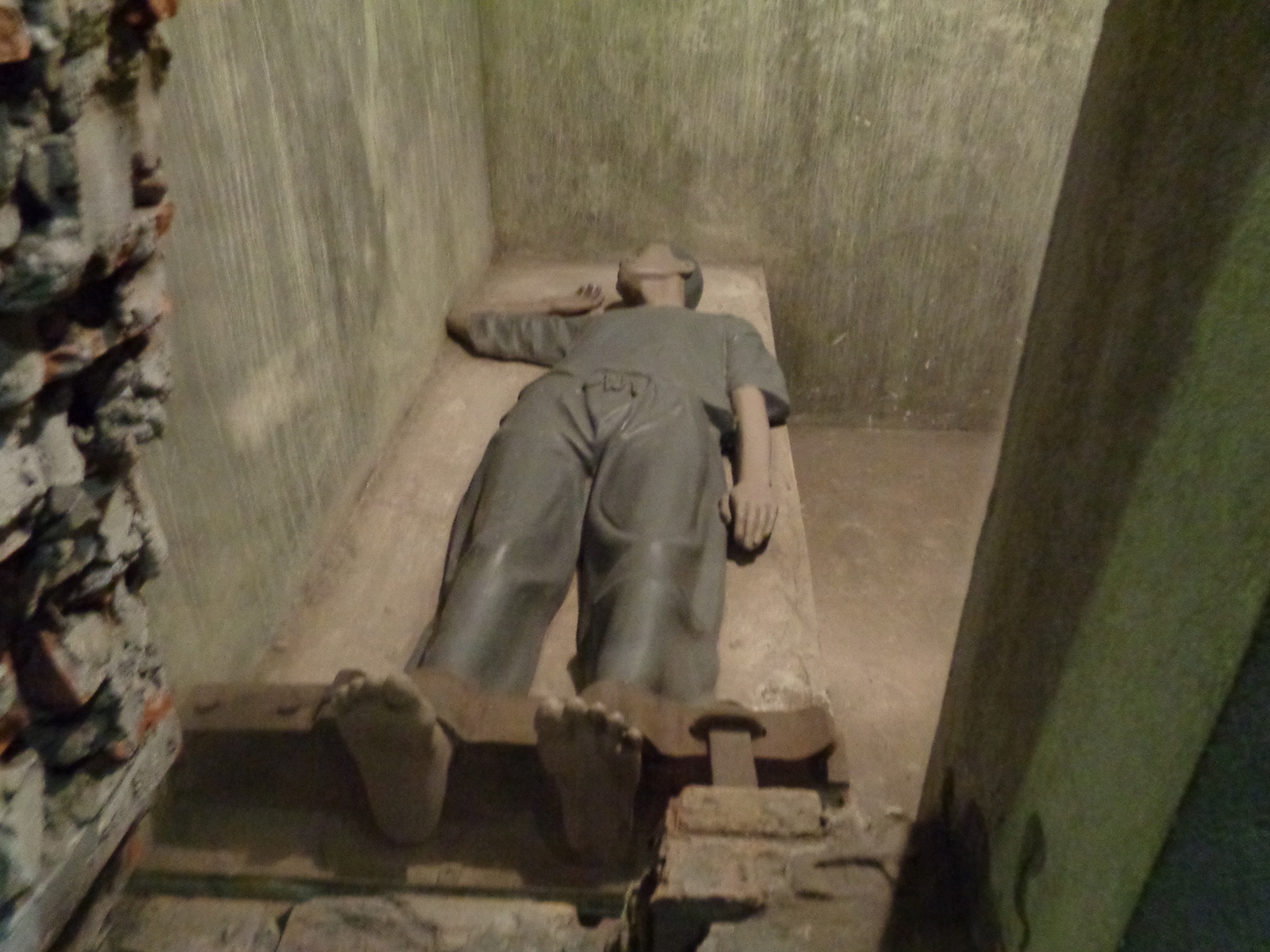
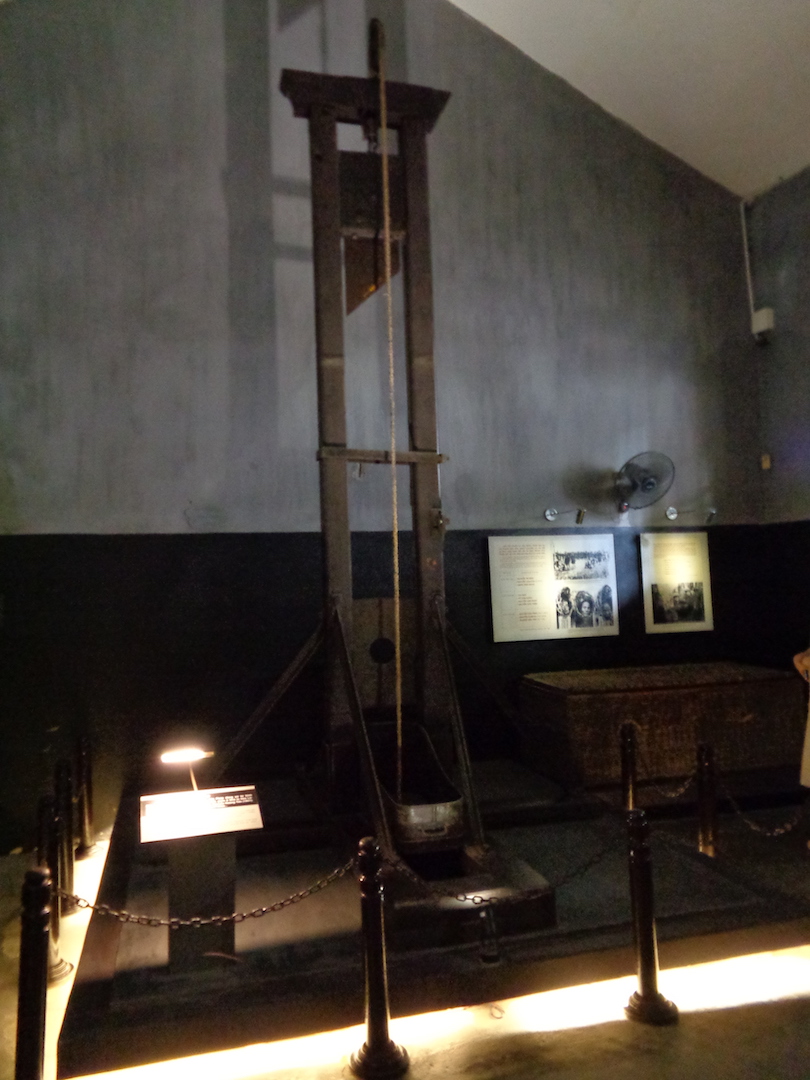
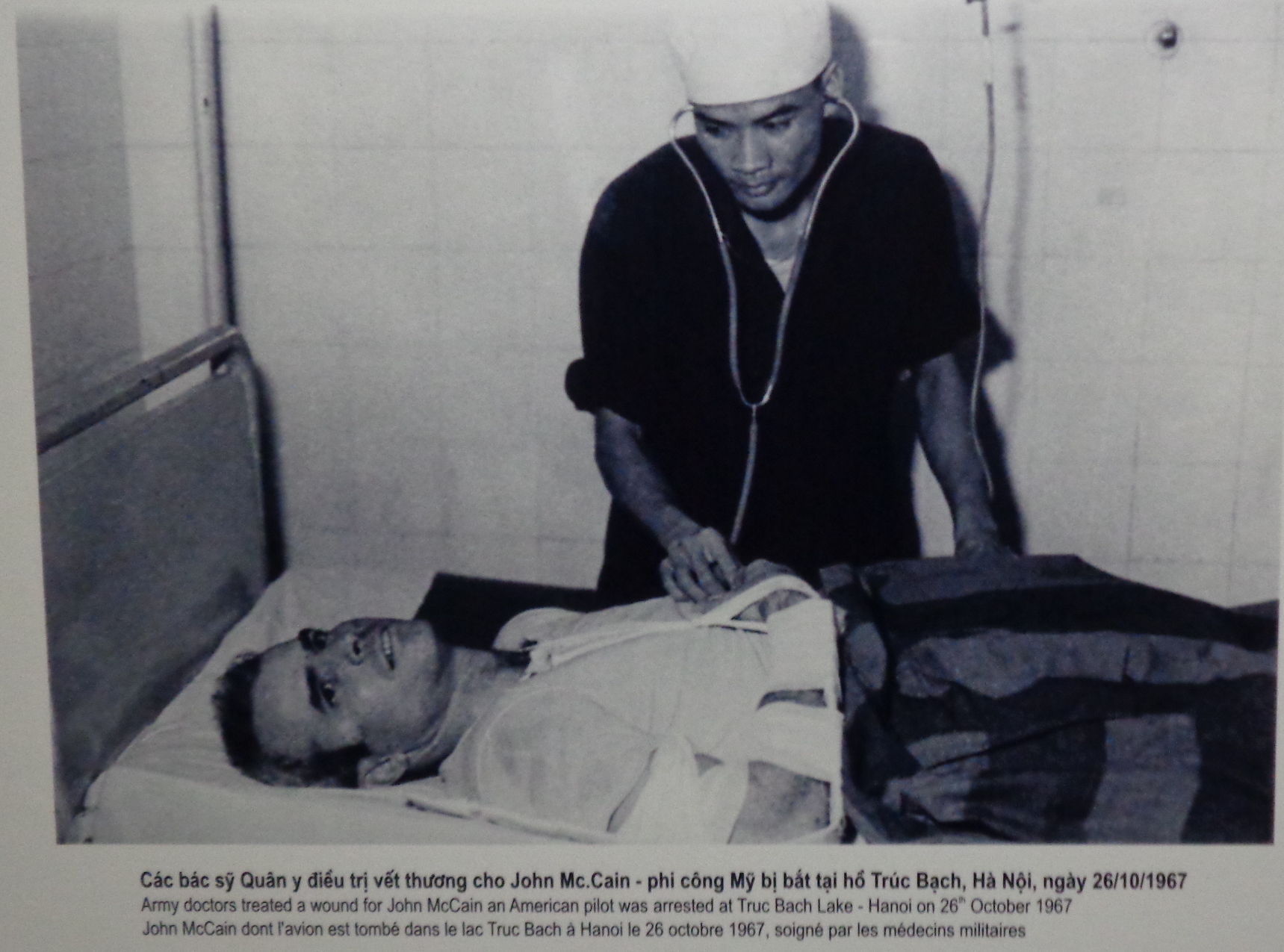

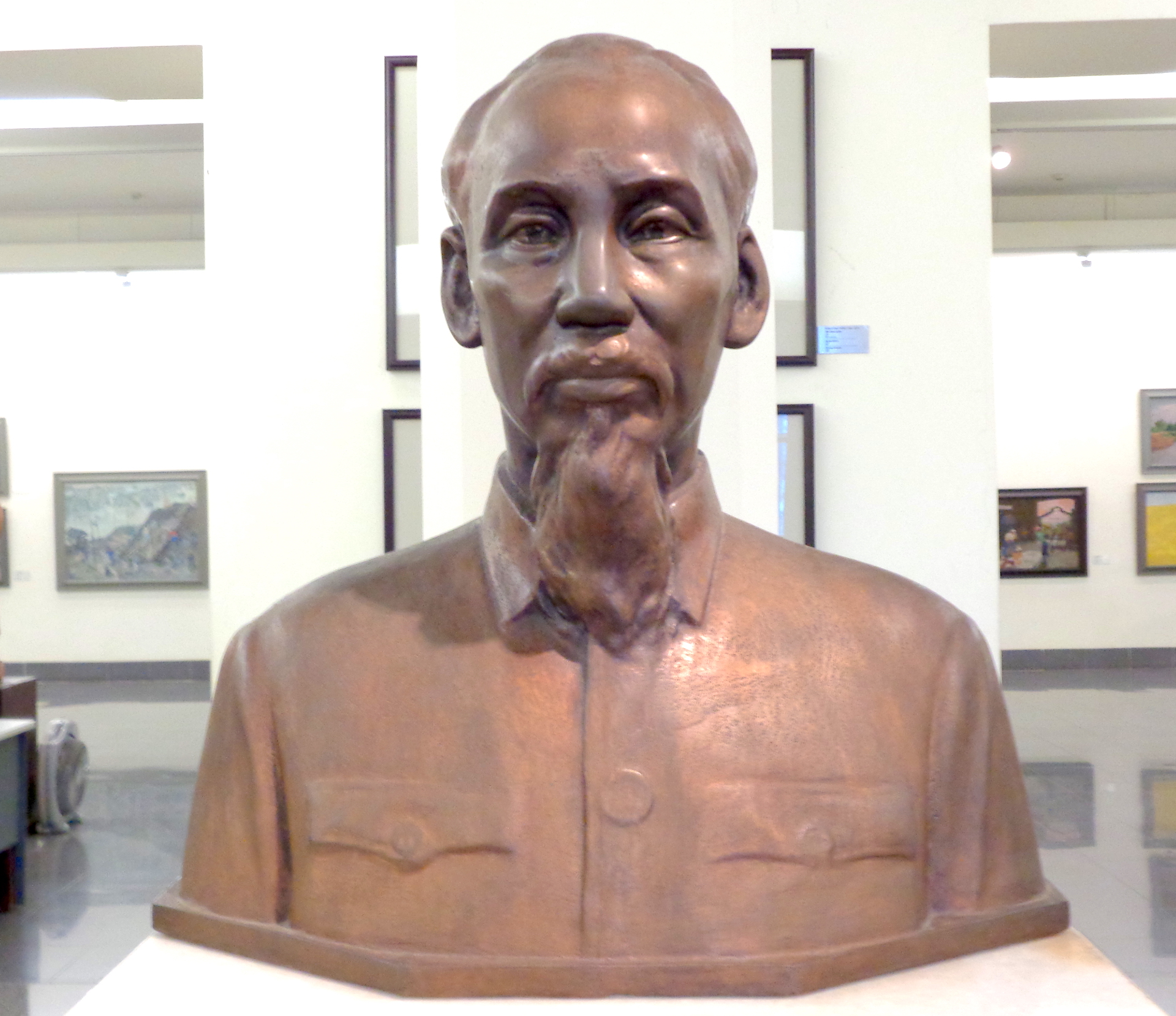
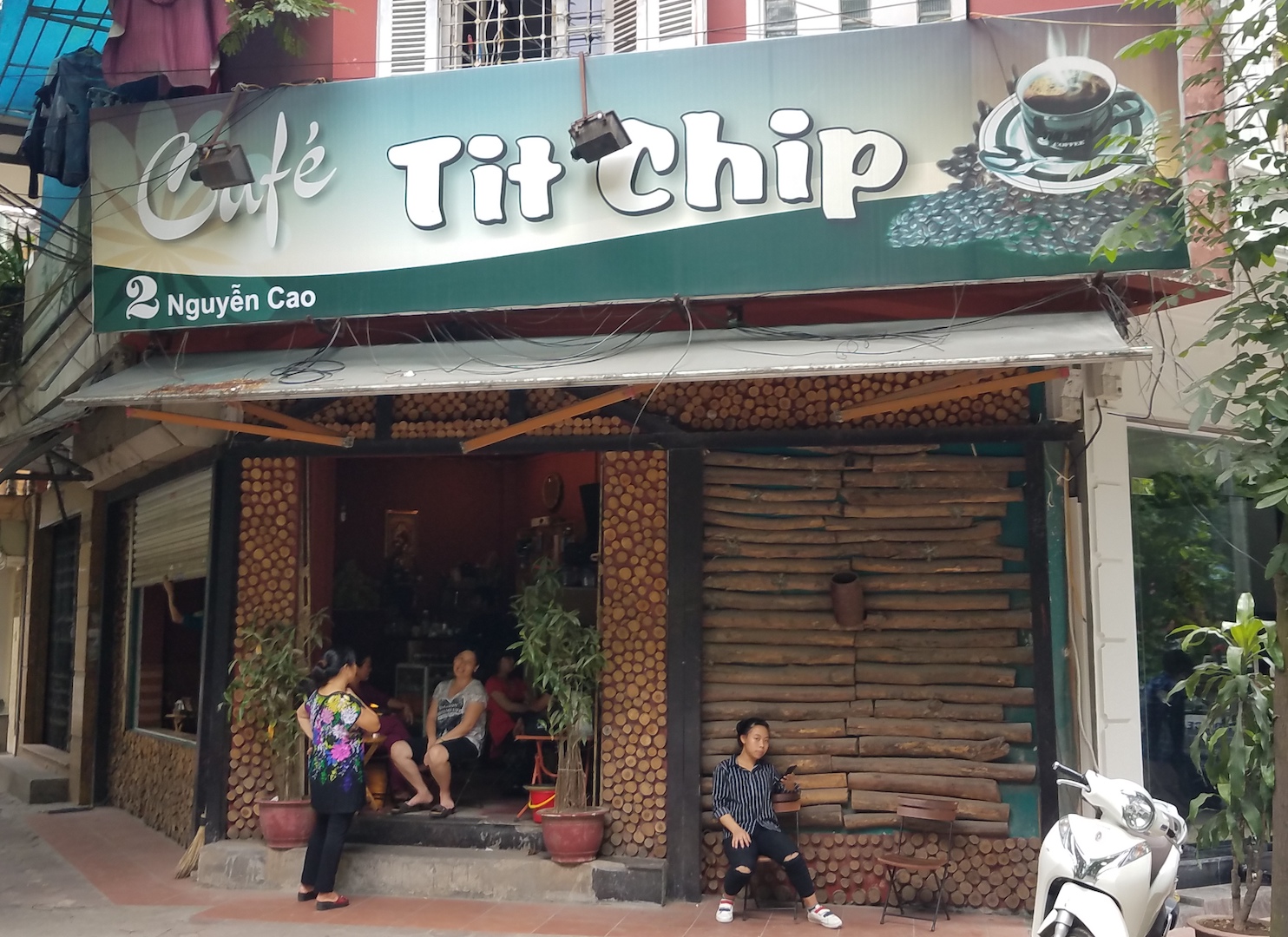
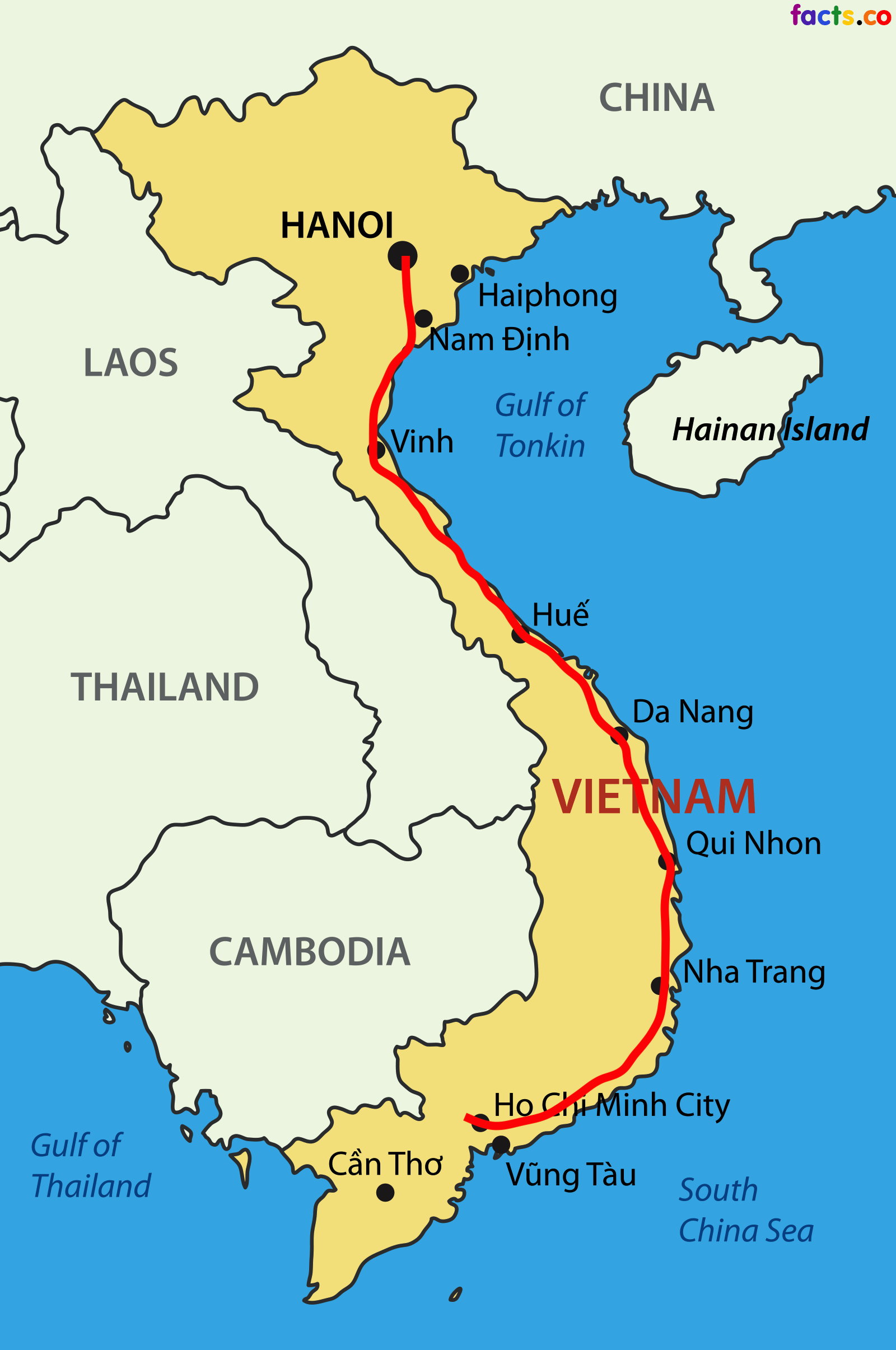
I think this country’s stories are going to be a fun read!
Hi Kev –
How long does it take you to put that bike together? You can probably do it with your eyes closed by now!
A few comments/questions:
Never before have I seen a chicken on a leash.
That cute pup may be what’s for dinner. Order carefully! 🙂
Is there much English spoken in Hanoi? How about road signage – any English below Vietnamese?
Google Maps has super powers!
Confucious say it no worth argue with one-eye peddle man who no speak English for 43 cent!
Have you seen any remnants from the war with the U.S., I mean things that are not intended for tourism? I wonder if you will as you ride through the countryside??? How about remnants of French colonialism? Other than the guillotine in the Hanoi Hilton . . .
Looking forward to more stories.
Peddle on!
Hey Deb, I guess it took me about an hour to get everything put back together. It’s gets faster every time. There is a lot more English spoken here than in Japan. A foreign language is required in Vietnamese schools, with most students choosing English or French. So it’s great. I still have to use my translator but in any group of 4 or 5 there is bound to be someone who speaks good English. I’m learning a little Vietnamese too which helps in the smaller villages. The road signs are all in Vietnamese.
As for war remnants, I think there are a few museums or monuments that exist. There are still some tunnels around that the Viet Cong used so I’ve got to do that. There may be something in My Lai. I’m not sure if the old US Embassy is still there in Ho Chi Minh City. I’ll have to do some research and get back to you. Not sure about the French. They left a bunch of buildings behind and a taste for coffee, baguettes and pastry, but that’s all I’ve seen so far.
Why is health care so expensive in the US? It’s really quite simple. We have the incredibly effective and expensive technology to keep people alive much longer than in many other countries as well as laws that require the tech to be used. This doesn’t mean, on aggregate, that people always live longer in the US, though that is so. It means that the costs of keeping some people alive for far longer than they would in other places is tremendous. The cost of keeping them alive adds up but it’s passed on to all, healthy or not, alive or almost dead. Some benefit from the tech (meaning drugs and machines, btw), but many do not, for one reason and another. Want health care to be cheaper? Accept earlier deaths for everyone. Unless, of course, you’re rich and can pay for the tech to keep you alive outside the health care system.
Anonymous,
Thanks for that input. I had not considered that reason. I worked for a while in a hospital in Galveston. While there I was told about a patient that had fallen while cutting tree branches and had broken his back, so he was paralyzed and had been in the ICU for about a year. He was an undocumented immigrant who did not have insurance. Someone has to cover those costs so this is definitely part of the reason.
But if you google “why are health care costs so high in the USA” you get a lot more reasons. The primary one that I’ve found so far (but I am still researching this) is administrative costs. From Investopedia:
The number one reason our healthcare costs are so high, says Harvard economist David Cutler, is that “the administrative costs of running our healthcare system are astronomical. About one quarter of healthcare cost is associated with administration, which is far higher than in any other country.”
One example Cutler brought up in a discussion on this topic with National Public Radio was the 1,300 billing clerks at Duke University Hospital, which has only 900 beds. Those billing specialists are needed to determine how to bill to meet the varying requirements of multiple insurers. Canada and other countries that have a single-payer system don’t require this level of staffing to administer healthcare.